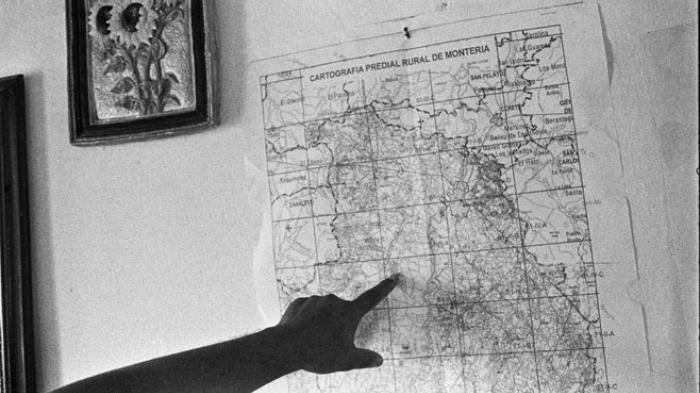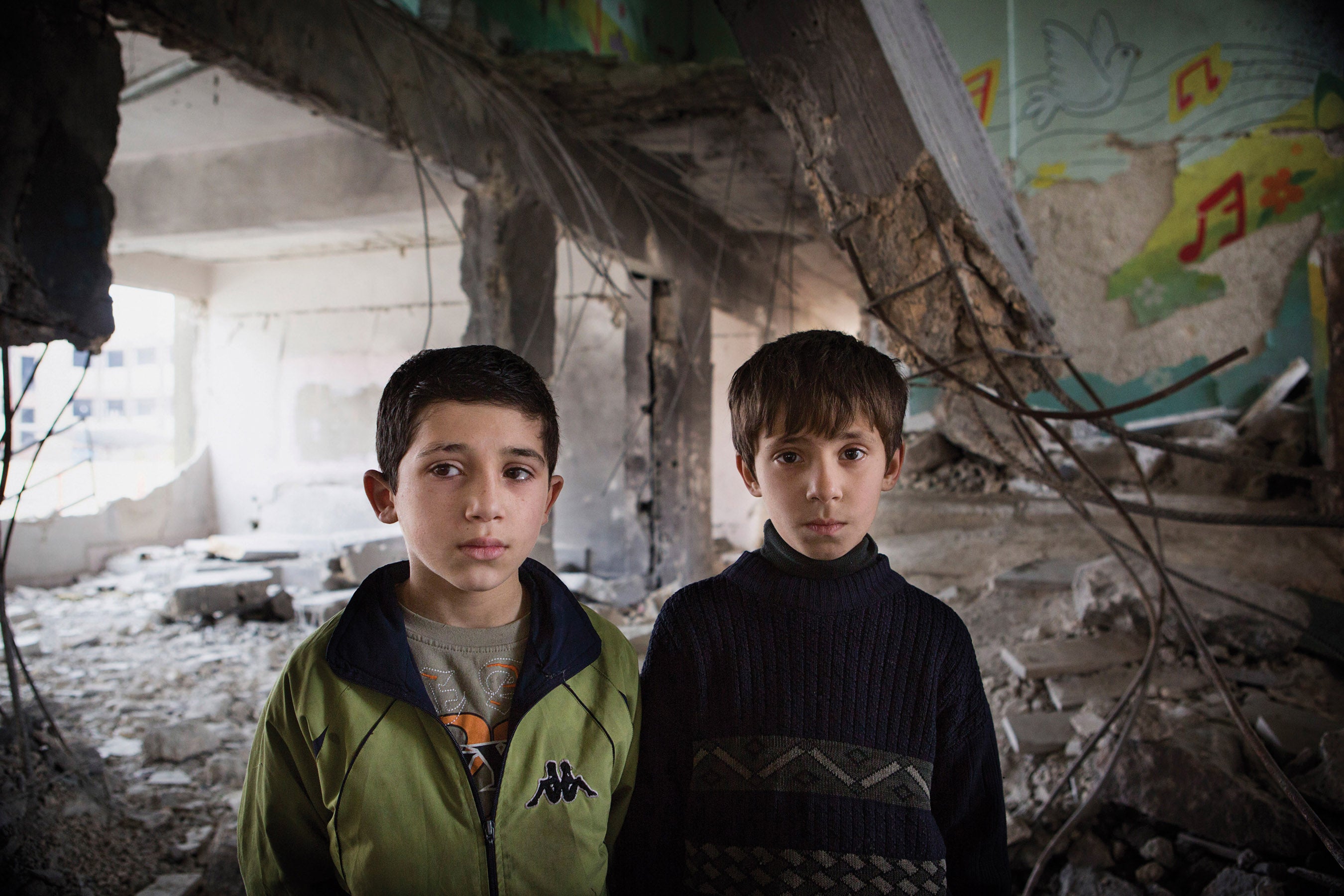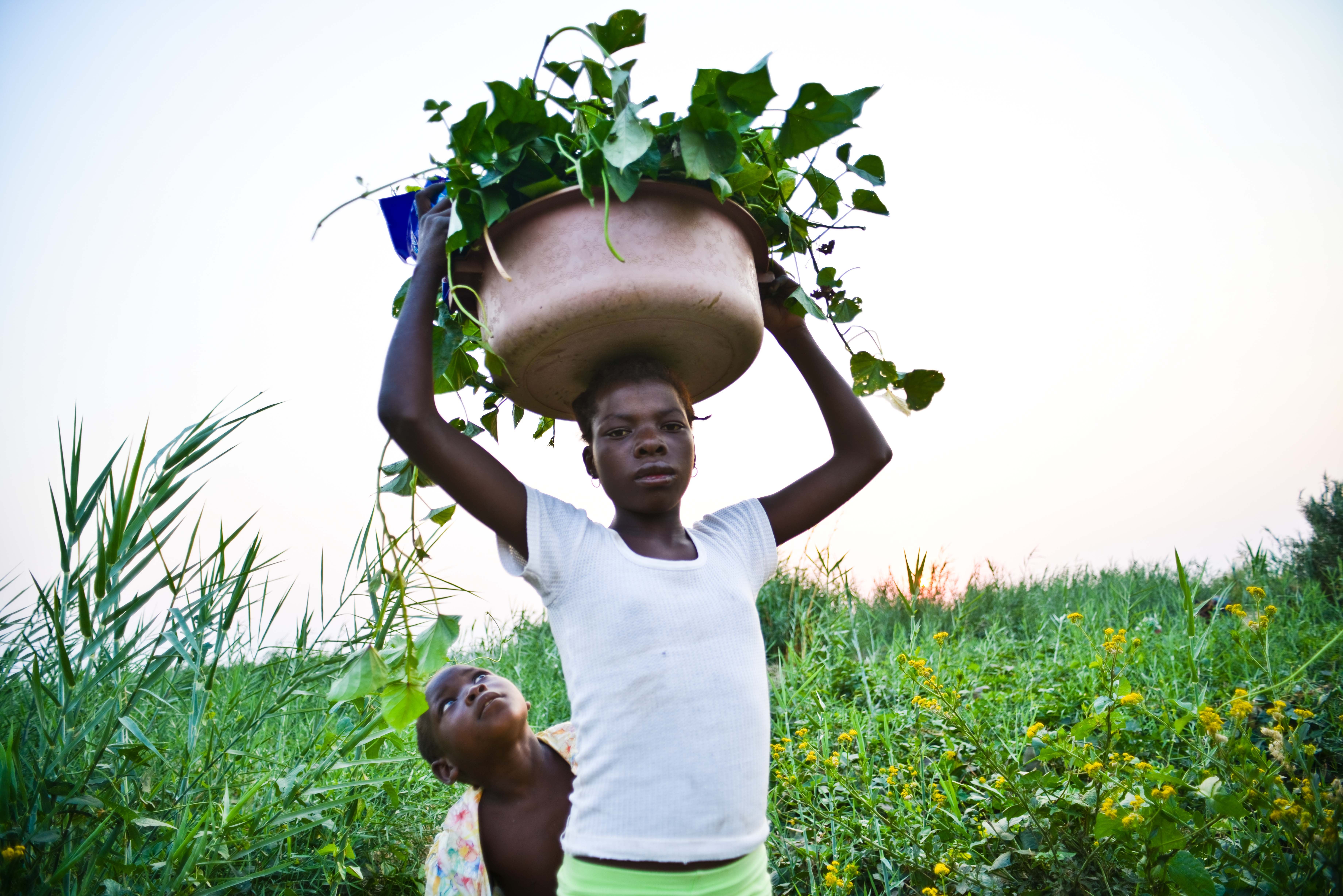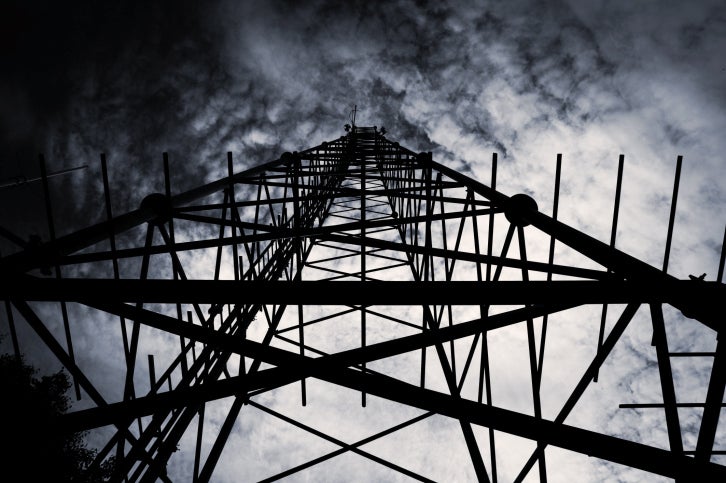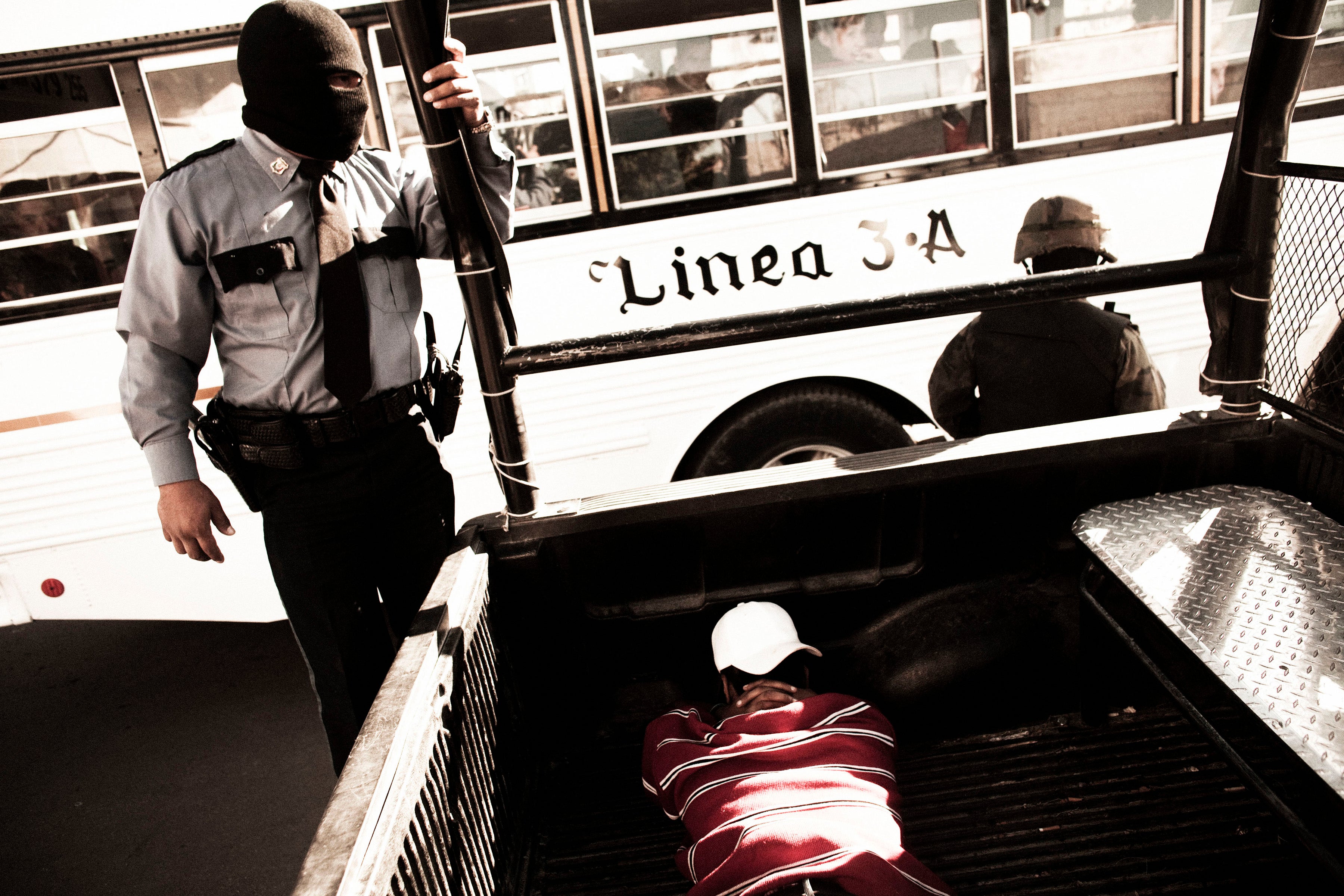Colombia's internal armed conflict continued to result in serious abuses by irregular armed groups in 2013, including guerrillas and successor groups to paramilitaries. More than 5 million Colombians have been internally displaced, and upward of 150,000 continue to flee their homes each year, generating the world’s second largest population of internally displaced persons (IDPs). Human rights defenders, trade unionists, journalists, indigenous and Afro-Colombian leaders, and IDP leaders face death threats and other abuses. The administration of President Juan Manuel Santos has consistently condemned threats and attacks against rights defenders, but perpetrators are rarely brought to justice.
The Santos administration has adopted several measures that undermine accountability for human rights violations. The government promoted constitutional changes concerning transitional justice and the military justice system that threaten to ensure impunity for egregious abuses by guerrillas, paramilitaries, and the military. In proceedings before the Inter-American Court of Human Rights, the government denied the military’s participation in atrocities for which military members had already been convicted in national courts.
The Colombian government and Revolutionary Armed Forces of Colombia (FARC) guerrillas have been engaged in peace talks in Cuba since 2012. Colombia’s internal armed conflict has taken approximately 220,000 lives since 1958, 81.5 percent of whom were civilians, according to a report published in 2013 by the government-created National Center for Historical Memory.
Guerrilla Abuses
The FARC and the National Liberation Army (ELN) continue to commit serious abuses against civilians, including killings, threats, forced displacement, and recruiting and using child soldiers. In September 2013, the government’s human rights Ombudsman’s Office expressed alarm over the forced recruitment of children from indigenous Paeces communities in Cauca department, allegedly by the FARC.
The FARC and ELN continue to use antipersonnel landmines. The government reported that landmines and unexploded munitions killed 13 civilians and injured 107 between January and August 2013.
Top FARC and ELN commanders have been convicted in absentia to lengthy prison sentences for a range of serious crimes, including murders, abductions, and child recruitment.
Paramilitaries and Their Successors
Between 2003 and 2006, right-wing paramilitary organizations underwent a deeply flawed government demobilization process in which many members remained active and reorganized into new groups. Successor groups to paramilitaries, largely led by members of demobilized paramilitary organizations, commit widespread abuses against civilians, including killings, disappearances, sexual violence, and forced displacement. According to the 2012 annual report of the International Committee of the Red Cross (ICRC), these groups caused at least as many deaths, threats, incidents of displacement, and disappearances as the armed conflict between the FARC and government forces.
Despite notable gains in capturing their leaders, Colombian authorities have failed to significantly curb the power of paramilitary successor groups: in May 2013, the police reported that the groups had 3,866 members operating in 167 municipalities, as compared to the police’s July 2009 estimate of 4,037 members in 173 municipalities. One source of the groups’ ongoing power is the toleration and collusion of local security force members.
Implementation of the Justice and Peace Law, which offers dramatically reduced sentences to demobilized paramilitaries who confess their atrocities, has been very slow. As of July 2013, eight years after the law was approved, special Justice and Peace unit prosecutors had obtained convictions against only 18 individuals. In 2013, the unit adopted a new investigative method that has accelerated its progress bringing charges against paramilitaries.
Since the "parapolitics" scandal erupted in 2006, more than 55 current and former members of Congress have been convicted for conspiring with paramilitaries. In August 2013, the Supreme Court ordered the arrest of Luis Alfredo Ramos, Senate president from 2002-2003, governor of Antioquia from 2008-2011, and a presidential hopeful for the 2014 elections.
The Inspector General’s Office, which conducts disciplinary investigations of public officials, has made significantly less progress in sanctioning members of Congress for collaborating with paramilitaries. The office has cleared several former Congressmen who had previously been found guilty of such collaboration in criminal proceedings.
Former President Álvaro Uribe (2002-2010) and his inner circle faced an increasing number of allegations of paramilitary ties. In 2013, prosecutors reopened a preliminary investigation into alleged links between Uribe and paramilitaries. Uribe denies the allegations. Prosecutors also questioned Uribe’s brother, Santiago Uribe, in relation to Santiago’s alleged role in creating a paramilitary group and a killing in Antioquia department in the 1990s.
In October 2013, prosecutors formally identified Uribe’s security chief while president, retired police Gen. Mauricio Santoyo, as a suspect in an investigation into the forced “disappearances” of two human rights activists in 2000. In 2012, Santoyo pled guilty in United States federal court for collaborating with paramilitaries between 2001 and 2008.
Abuses by Public Security Forces
During the Uribe administration, the Colombian army executed an alarming number of civilians, particularly between 2004 and 2008. In many cases—commonly referred to as “false positives”—army personnel killed civilians and reported them as combatants killed in action, apparently in response to pressure from superiors to boost body counts. There has been a dramatic reduction in cases of alleged unlawful killings attributed to security forces since 2009; nevertheless, some isolated cases were reported in 2012 and 2013.
The government does not keep statistics for cases of “false positives” as a separate category of crimes distinct from other types of unlawful killings. However, as of June 2013, the Human Rights Unit of the Attorney General’s Office had been assigned investigations into 2,278 cases of alleged unlawful killings by state agents involving nearly 4,000 victims, and had obtained convictions for 189 cases. The convictions covered 605 army members, of whom 91 were (mostly junior) officers. More than 40 army colonels and lieutenant colonels were under investigation, but just four had been convicted at time of writing.
In 2012 and 2013, in cases before the Inter-American Court of Human Rights, the government denied the military’s participation in human rights violations for which military members had already been convicted in national courts. The government claimed the FARC killed 17 civilians in Santo Domingo, Arauca in 1998, despite multiple judicial rulings in Colombia establishing the air force’s responsibility for the massacre. The court rejected Colombia’s arguments and held the state responsible. Similarly, in proceedings before the court concerning the 1985 Palace of Justice siege, the government did not accept that the army participated in enforced “disappearances” for which an army general had already been convicted.
Reforms Promoting Impunity
In July 2012, the government enacted the Legal Framework for Peace constitutional amendment, which paves the way for widespread impunity for atrocities by guerrillas, paramilitaries, and the military if a peace agreement is reached with the FARC. The amendment empowers Congress to limit the scope of prosecutions of atrocities to individuals found “most responsible,” and provide statutory immunity to others who planned, executed, and covered up the same crimes but are not deemed “most responsible,” a category the amendment did not define.
Furthermore, it gives Congress the authority to exempt from criminal investigation entire cases of atrocities—such as rapes or enforced “disappearances”—if they did not form part of a systematic attack. Lastly, the amendment enables Congress to fully suspend prison sentences for all guerrillas, paramilitaries, and military personnel convicted of heinous abuses, including those found “most responsible” for Colombia’s worst crimes.
Colombia’s Constitutional Court reviewed the Legal Framework for Peace and declared it constitutional in August 2013. However, the court corrected a major flaw in the amendment by prohibiting full suspension of penalties for those “most responsible” for atrocities, according to a press release summarizing the court’s ruling, which was not public at time of writing.
In December 2012, the Santos administration enacted a constitutional change to the military justice system that created a serious risk that “false positive” investigations would be transferred from civilian prosecutors to military courts, which have long failed to hold perpetrators accountable.
In June 2013, as a result of the amendment, the case of an army colonel facing trial for two alleged false positive killings was transferred to the military justice system. In addition to opening the door to the transfer of false positive cases, the amendment’s implementing law, which Congress approved in June 2013, also authorized security forces to use lethal force in a dangerously broad range of situations. In October 2013, the Constitutional Court struck down the change to the military justice system on procedural grounds; however, President Santos announced the government would resubmit a new draft of the exact same amendment to Congress in 2014.
Internal Displacement and Land Restitution
More than 5 million Colombians have been internally displaced since 1985, according to newly revised government figures. The government registered more than 150,000 newly displaced people in 2012, while CODHES, a respected Colombian nongovernmental organization (NGO), reports nearly 260,000 Colombians were displaced that year. Displacement levels are particularly high along the Pacific Coast, such as in the predominantly Afro-Colombian city of Buenaventura, where paramilitary successor groups caused the forced displacement of more than 2,500 people during the first week of November 2013.
The Colombian government has made limited progress implementing its land restitution program under the Victims Law, which was enacted in 2011 to restore millions of hectares of stolen and abandoned land to displaced people. The Agricultural Ministry estimated that by the end of 2014 there would be judicial rulings in nearly 80,000 land restitution cases under the Victims Law; however, as of September 2013, the government had obtained rulings ordering restitution for 666 of the more than 45,000 land claims it had received. By September 2013—more than two years since the Victims Law was enacted—the government reported just three families had returned to live on their land due to rulings under law.
IDPs face threats and violence for attempting to reclaim their land. Between January 2012 and September 2013, more than 700 displaced land claimants and their leaders seeking land restitution through the Victims Law reported to authorities that they had received threats. Prosecutors have not charged a single suspect in any of their investigations into such threats. As of August 2013, the Attorney General’s Office reported that it was investigating 43 cases of killings of “leaders, claimants, or participants in land restitution matters” committed since 2008.
Gender-Based Violence
Gender-based violence (GBV) is widespread in Colombia. Lack of training and poor implementation of protocols create obstacles for women and girls seeking post-violence care, with the result that victims may face delays in accessing essential medical services. Perpetrators of GBV crimes are rarely brought to justice.
Violence against Human Rights Defenders, Journalists, and Trade Unionists
Rights advocates and journalists continue to be targeted for threats and attacks. On May 1, unidentified gunmen opened fire against Ricardo Calderón, a leading investigative journalist who had just exposed in Semana magazine how army members convicted of atrocities were enjoying extravagant privileges at the Tolemaida military detention center. Calderón escaped the attack without injuries.
The National Labor School (ENS), Colombia’s leading NGO monitoring labor rights, continues to report killings of trade unionists. Threats against trade unionists are common.
The Interior Ministry runs a protection program that covers thousands of at-risk members of vulnerable groups, including human rights defenders, trade unionists, and land restitution claimants.
Key International Actors
The United States remains the most influential foreign actor in Colombia. In 2013, it provided approximately US$473 million in aid, 59 percent of which went to the military and police. A portion of US military aid is subject to human rights conditions, which the US Department of State has not enforced. In September 2013, the State Department certified that Colombia was meeting human rights benchmarks, even though its military justice system reform directly contradicted the condition requiring that civilian authorities investigate and try all alleged human rights violations.
The UN Office of the High Commissioner for Human Rights (OHCHR) is active in Colombia. In April, the government announced it would renew the OHCHR country office mandate through 2016, but three months later, following a statement by the office calling for an investigation into the police’s possible excessive use of force, President Santos said he had not decided if he would extend the mandate. The government ultimately extended the mandate through October 2014.
The ICRC is also active in Colombia, where its work includes providing assistance to IDPs. The office of the prosecutor of the International Criminal Court (ICC) continued to monitor local investigations into crimes that may fall within the ICC’s jurisdiction. In July 2013, the ICC’s chief prosecutor sent a letter to the Constitutional Court stating that full suspension of penalties for those most responsible for crimes against humanity and war crimes could trigger an investigation by the international body.
